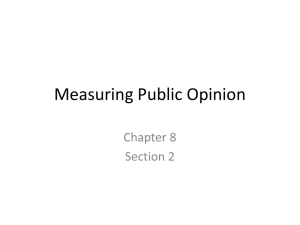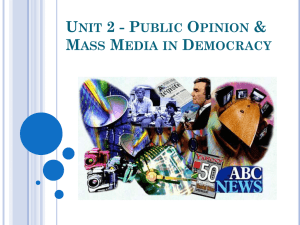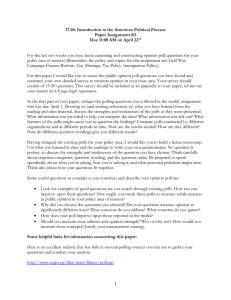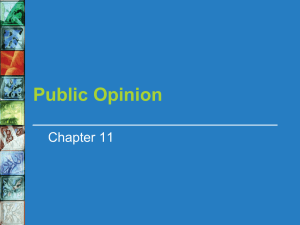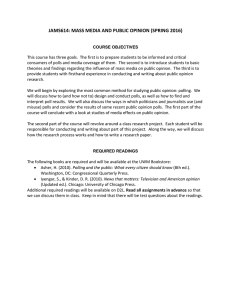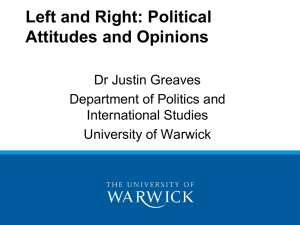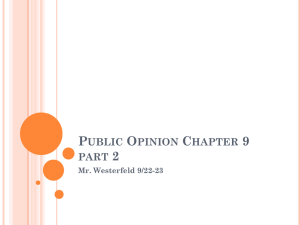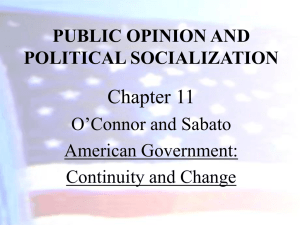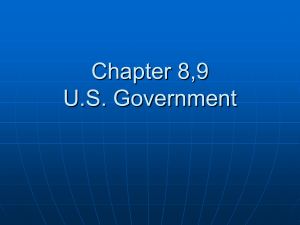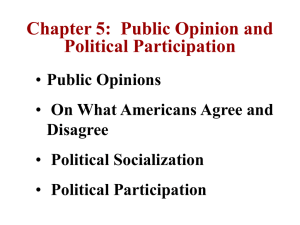Part 1 The Formation and Measurement of Public Opinion
advertisement
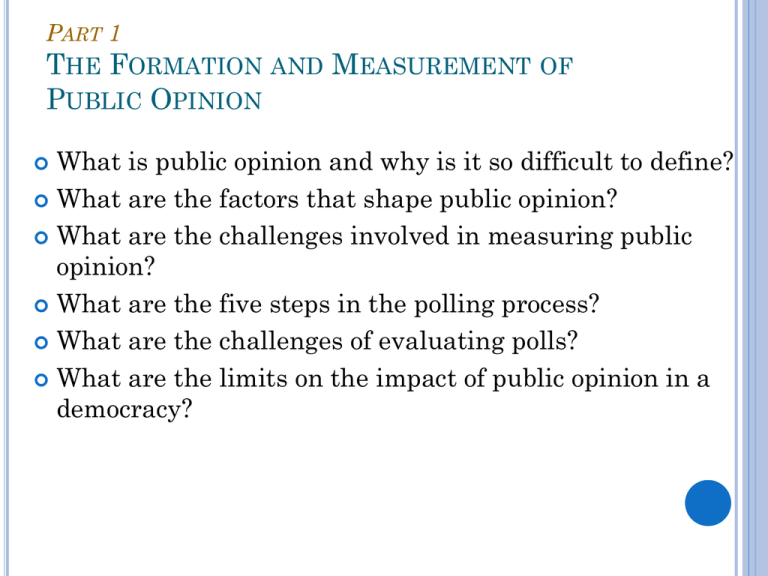
PART 1 THE FORMATION AND PUBLIC OPINION MEASUREMENT OF What is public opinion and why is it so difficult to define? What are the factors that shape public opinion? What are the challenges involved in measuring public opinion? What are the five steps in the polling process? What are the challenges of evaluating polls? What are the limits on the impact of public opinion in a democracy? WHAT IS PUBLIC OPINION? Def: Attitudes held by people on matters of government and politics. Different Publics The US has many groups, or publics, who share common views. Public Opinions More than one public opinion can exist at the same time. A view or position must be expressed in the open in order to a public opinion. FACTORS INFLUENCING PUBLIC OPINION Mass Media Def. - means of communication that reach large, widely dispersed audiences simultaneously. Peer Groups The people with whom one regularly associates. (friends, classmates, neighbors) Opinion Leaders Anyone who has an unusually strong influence on others’ views. Historic Events Ex) 9/11 helped shape the political views and opinions of all Americans. The Schools Children acquire political knowledge as they are taught about political systems, patriotism, and great Americans. The Family Children first see the political world from within the family and spent large amounts of time with them. MEASURING PUBLIC OPINION Elections Interest Groups • Private organizations whose members share certain views and work to shape public policy. The Media • The media are both “mirrors” and “molders” of opinion. Personal Contacts • Public officials rely on contacts with their constituents, such as reading their mail, answering calls, and meeting people in public. POLLS—THE BEST MEASURE Public opinion is best measured by public opinion polls, devices that attempt to collect information by asking people questions. THE POLLING PROCESS Defining the Universe • The universe means the population that the poll aims to measure. Constructing a Sample • A sample is a representative slice of the poll’s population. Preparing Valid Questions • The way in which questions are worded is very important. Wording can affect the reliability of any poll. Interviewing • Pollsters communicate with the sample respondents using various methods including person-to-person interviews, telephone calls, and mail surveys. Reporting • Pollsters use computers to store and manipulate data, which helps them analyze and report the results of the poll. EVALUATING POLLS AND THEIR LIMIT ON PUBLIC OPINION Evaluating Polls Most national and regional polls are fairly reliable, but far from perfect. Problems Cannot measure intensity, stability, and relevance of the opinions they report. Polls sometimes shape the opinions they are supposed to measure. Limits on the Impact of Public Opinion Public opinion is the major, but by no means the only, influence on public policy. The Government protects minority interests against the excesses of majority views and actions. Finally, polls are not elections, nor are they substitutes for elections.
